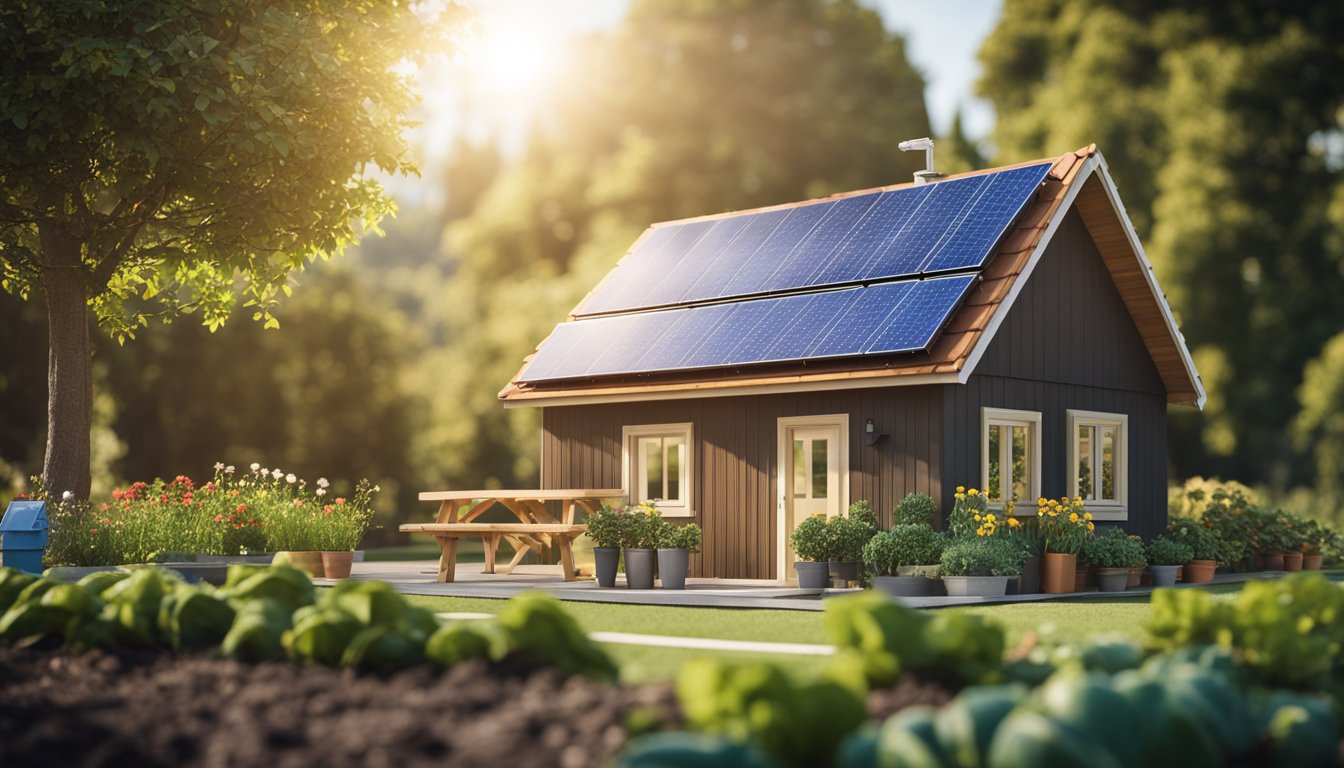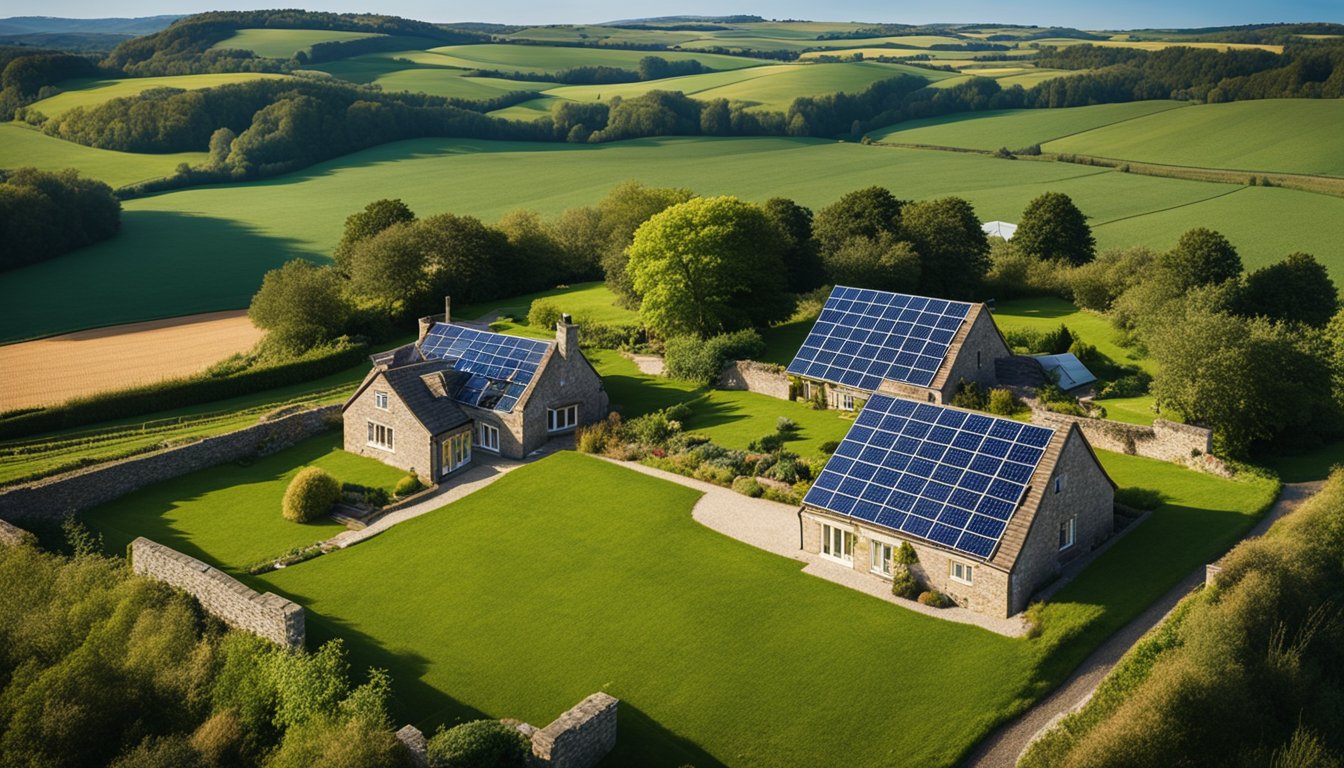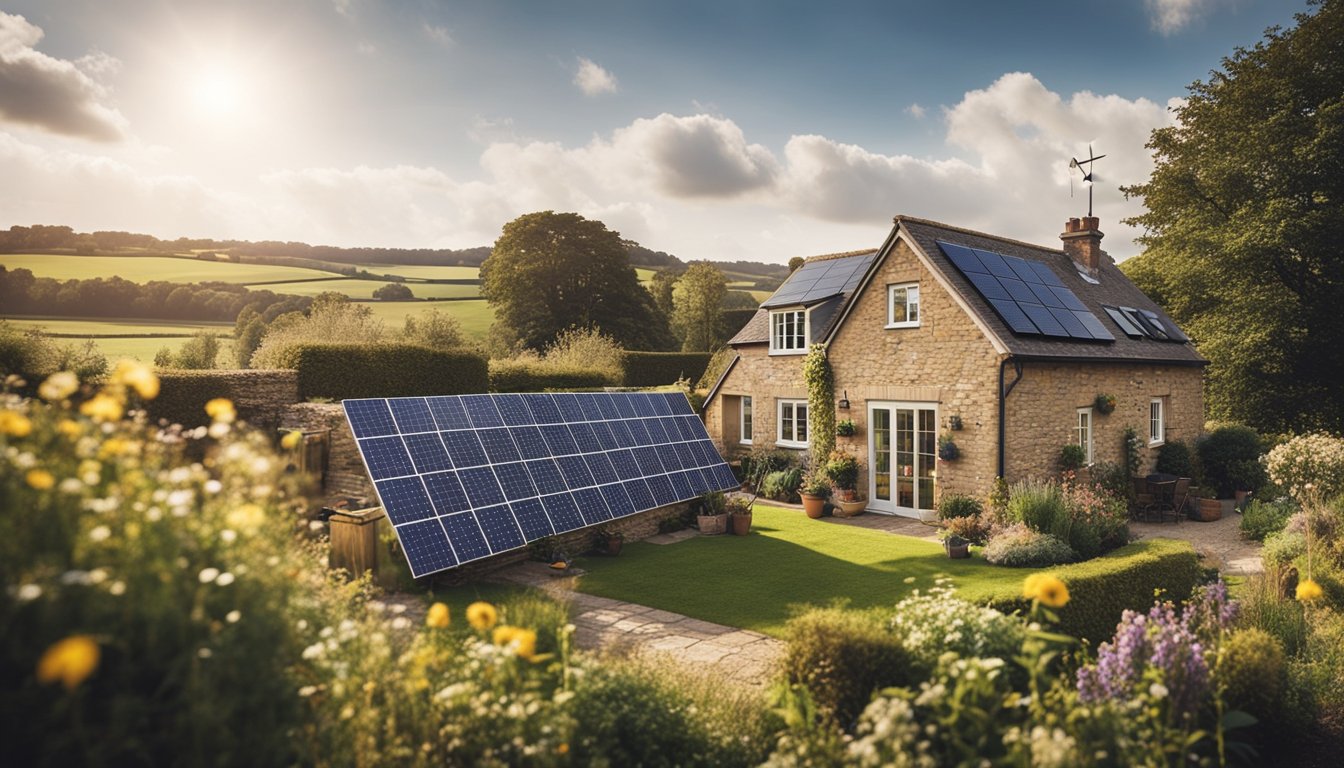Late updated: 05 Nov 2024 09:11
Written by: Oliver Bennett
Eco-Friendly Energy Tips For Rural UK Residences: Sustainable Solutions for Country Living
Exploring eco-friendly energy solutions is more important than ever for those of us living in rural UK settings. Rural homes often face unique challenges such as reliance on oil and gas for heating, making the shift to sustainable energy essential. Our goal is to provide you with practical tips to improve the energy efficiency of your home while also reducing your ecological footprint. By adopting simple changes like enhancing insulation and utilising renewable energy sources, we can significantly lower our carbon emissions and take a step towards a sustainable future.

Transforming our rural homes with green energy doesn't have to be a daunting task. Whether it's through cost-effective measures like installing insulation in the loft or upgrading to energy-efficient appliances, small adjustments can lead to substantial benefits. Installing modern eco heating systems, such as heat pumps, provides another avenue to achieve sustainable living. They extract warmth from the environment and efficiently heat our homes, offering a compelling alternative to traditional heating systems.
The beautiful landscapes of the UK countryside not only inspire us but also offer potential resources like wind and solar energy, which rural residents can harness. Embracing these energy alternatives not only aligns us with environmental goals but also promises long-term financial savings. Let's explore these opportunities together and make our rural homes a model of eco-friendly living.
Key Takeaways
- Home insulation boosts energy efficiency in rural UK homes.
- Renewable energy sources can significantly lower carbon emissions.
- Minimal changes lead to sustainable living and cost savings.
Optimising Home Insulation

Enhancing home insulation is crucial for energy efficiency. By targeting specific areas like lofts, walls, and windows, we can significantly reduce energy bills and carbon emissions.
Understanding the Importance of Insulation
Insulating our homes properly is essential for maintaining a consistent indoor temperature throughout the year. Effective insulation keeps heat inside during the winter and out during the summer. This not only results in improved comfort but also lowers energy consumption, leading to cost savings. The impact on reducing carbon emissions is significant as well, which further bolsters our commitment to environmental sustainability.
Options for Insulation in Rural Homes
Rural homes have diverse insulation needs. Loft insulation is a straightforward solution that prevents heat loss through the roof. Cavity wall insulation fills gaps within walls, contributing to thermal efficiency. Double glazing or triple glazing installed in windows provides another layer of protection by reducing heat loss and limiting draughts. Additionally, draught-proofing areas such as doors and windows prevents unwanted airflow, thus maximising energy savings.
Innovative Insulation Materials and Techniques
The variety of eco-friendly insulation materials today has grown, offering us more sustainable options. Cork insulation offers excellent thermal properties and is resistant to dampness, making it ideal for walls and floors. Spray foam insulation, made from non-toxic, renewable materials, can fill hard-to-reach spaces effectively. Exploring these modern materials helps us achieve superior insulation performance while honouring our ecological responsibilities.
Utilising Renewable Energy Sources
Incorporating renewable energy sources into rural UK residences can significantly reduce our carbon footprint and contribute to net zero emissions. We aim to explore practical green energy solutions, such as solar energy, wind turbines, biomass heating systems, and alternative gases like hydrogen and BioLPG.
Solar Energy Solutions
Solar panels present an effective way for rural residents to harness renewable energy directly from the sun. With increasing efficiency and decreasing costs, solar installations are more accessible than ever. Residents can install photovoltaic panels on rooftops or install ground-mounted systems, ideally positioned to maximise exposure to sunlight.
The UK government offers incentives, such as feed-in tariffs, which support the adoption of solar technology. These initiatives aim to make solar energy a viable option for reducing reliance on the national grid. Through these efforts, residents can experience both financial savings and a reduced carbon footprint over time.
Benefits of Wind Turbines for Rural Areas
Wind turbines can be particularly advantageous in rural landscapes due to available space and favourable wind conditions. These turbines generate electricity by converting wind energy, making them an excellent option for homes looking to incorporate sustainable practices. Smaller-scale, or micro, wind turbines suit individual property needs and can be integrated into a home’s existing electrical system.
Participating in community wind projects can further enhance financial benefits and foster a collective movement towards renewable energy. While initial installation costs can be high, long-term savings and reduced carbon emissions justify the investment. Thus, wind turbines represent a robust alternative energy source for rural UK homes aiming for greener energy solutions.
Biomass Heating Systems
Biomass heating systems utilise organic materials, such as wood pellets or chips, to generate heat, offering a renewable alternative to traditional fossil fuels. Biomass boilers can be installed to provide heating and hot water, significantly cutting down on emissions. These systems are particularly beneficial for rural homes, where larger properties and space allow for installation and fuel storage.
Under the Renewable Heat Incentive scheme, the government provides financial support for adopting biomass heating, making it economically feasible. By transitioning to biomass, we can dramatically lower dependence on non-renewable energy sources, supporting the path to net zero by 2050 goals.
Exploring Hydrogen and BioLPG Options
Hydrogen and BioLPG represent promising advancements in renewable liquid gases for rural properties. Hydrogen use in home heating systems is still emerging, but it offers a clean energy alternative with zero carbon emissions at the point of use. Adopting such technologies aligns with the broader goal of reducing climate impact.
BioLPG, a renewable version of LPG, serves as another viable option. This gas reduces carbon emissions when compared to conventional LPG and can be used in existing LPG appliances without significant modifications. As governments and industries push for wider adoption, these gases offer innovative solutions enhancing energy efficiency across rural properties.
Frequently Asked Questions

Exploring eco-friendly energy options for rural UK homes involves evaluating solar panels, ground-source heat pumps, and government grants. Employing strategies to reduce energy wastage and incorporating rainwater harvesting can enhance sustainability. Wind energy can also be a viable consideration.
What are the most effective solar panel systems for rural homes in the UK?
The most effective solar panel systems for rural homes in the UK typically involve photovoltaic (PV) panels. These systems convert sunlight into electricity efficiently and can be complemented by battery storage systems to optimise energy usage.
How can a ground-source heat pump reduce energy costs in remote UK locations?
Ground-source heat pumps utilise the earth's consistent underground temperature to provide efficient heating. Installing such systems in remote locations can significantly lower energy costs as they reduce reliance on traditional heating methods, exploit renewable energy sources, and offer long-term savings.
What government grants are available for installing renewable energy solutions in rural UK properties?
Several government grants and schemes support renewable energy installations, including the Domestic Renewable Heat Incentive (RHI), the Smart Export Guarantee (SEG), and various local council initiatives. These assistances can provide financial incentives to ease the initial costs.
What are the best strategies for rural UK homeowners to minimise energy wastage?
Effective strategies include enhancing insulation in walls, roofs, and floors, installing energy-efficient appliances, and using smart home technologies. Regular maintenance of heating systems and adopting energy-saving habits are practical steps to reduce energy usage.
How can rainwater harvesting contribute to sustainable living in the British countryside?
Rainwater harvesting systems collect and store rainwater for non-potable uses like irrigation and flushing toilets. This practice reduces the strain on local water supplies, cuts down water bills, and promotes sustainable resource management.
What wind energy options are suitable for individual rural residences in the UK?
Small wind turbines are a viable option for individual rural residences, especially in areas with consistent and strong winds. These systems can supplement energy needs and reduce dependency on the grid, contributing to a sustainable energy mix for homeowners.
